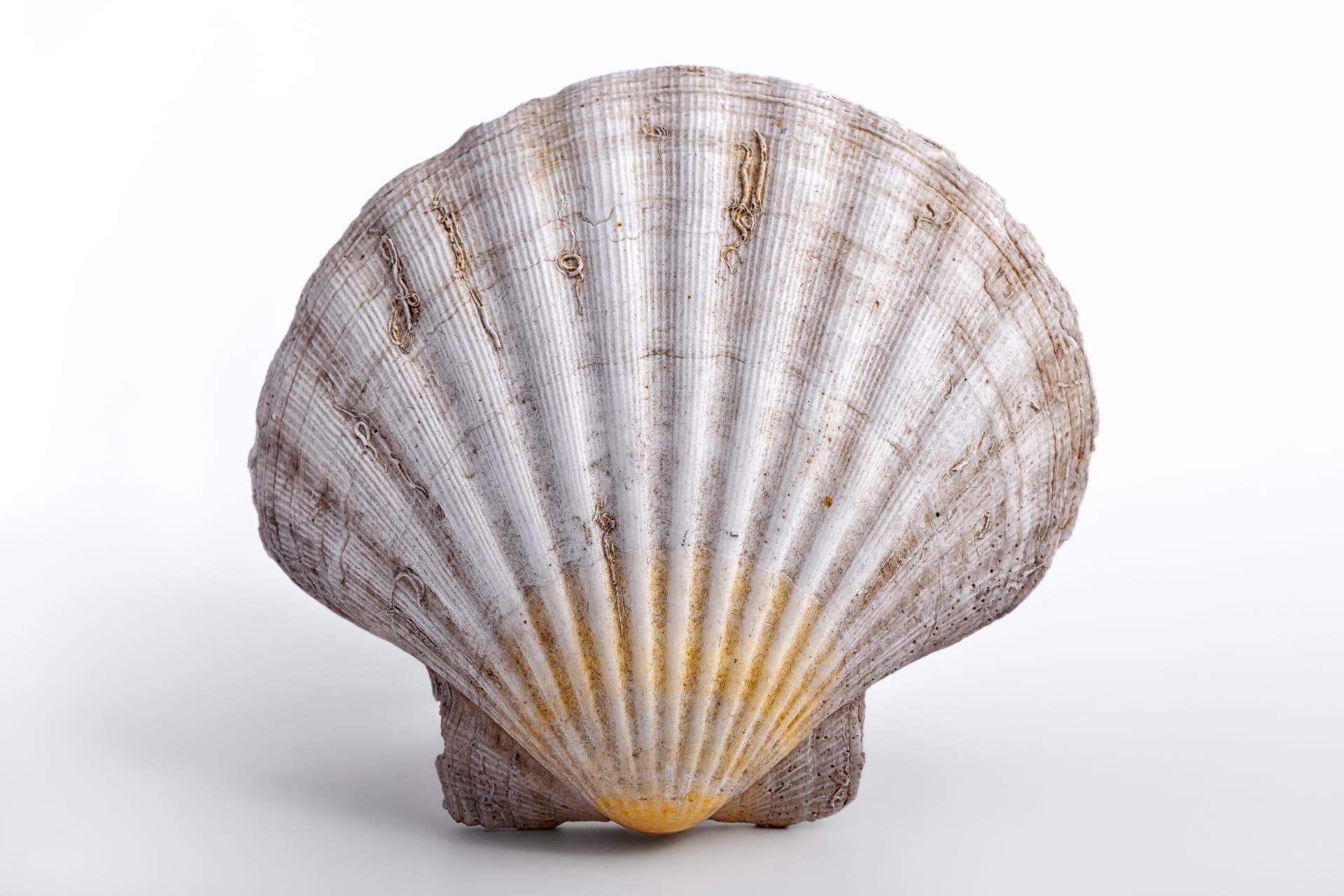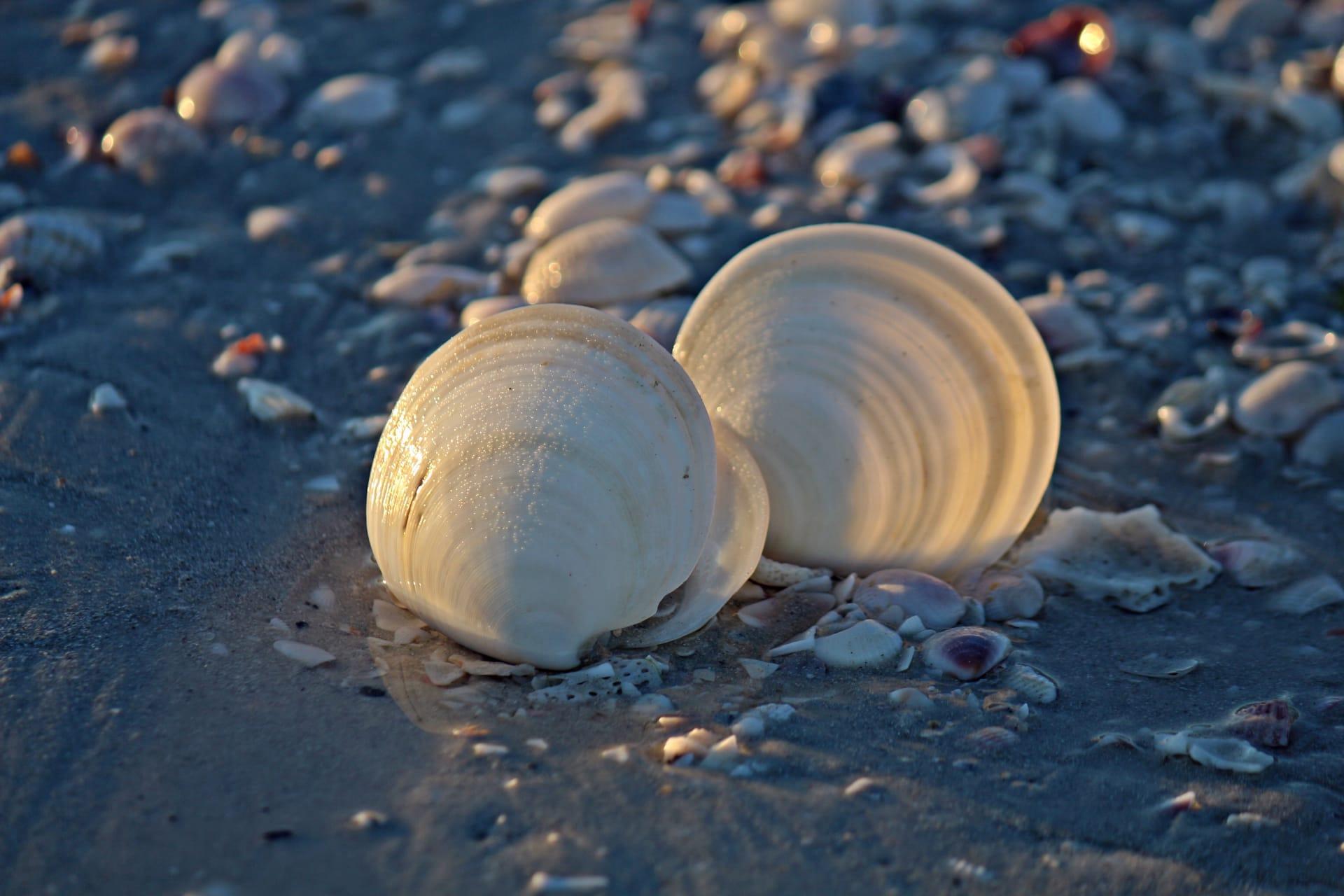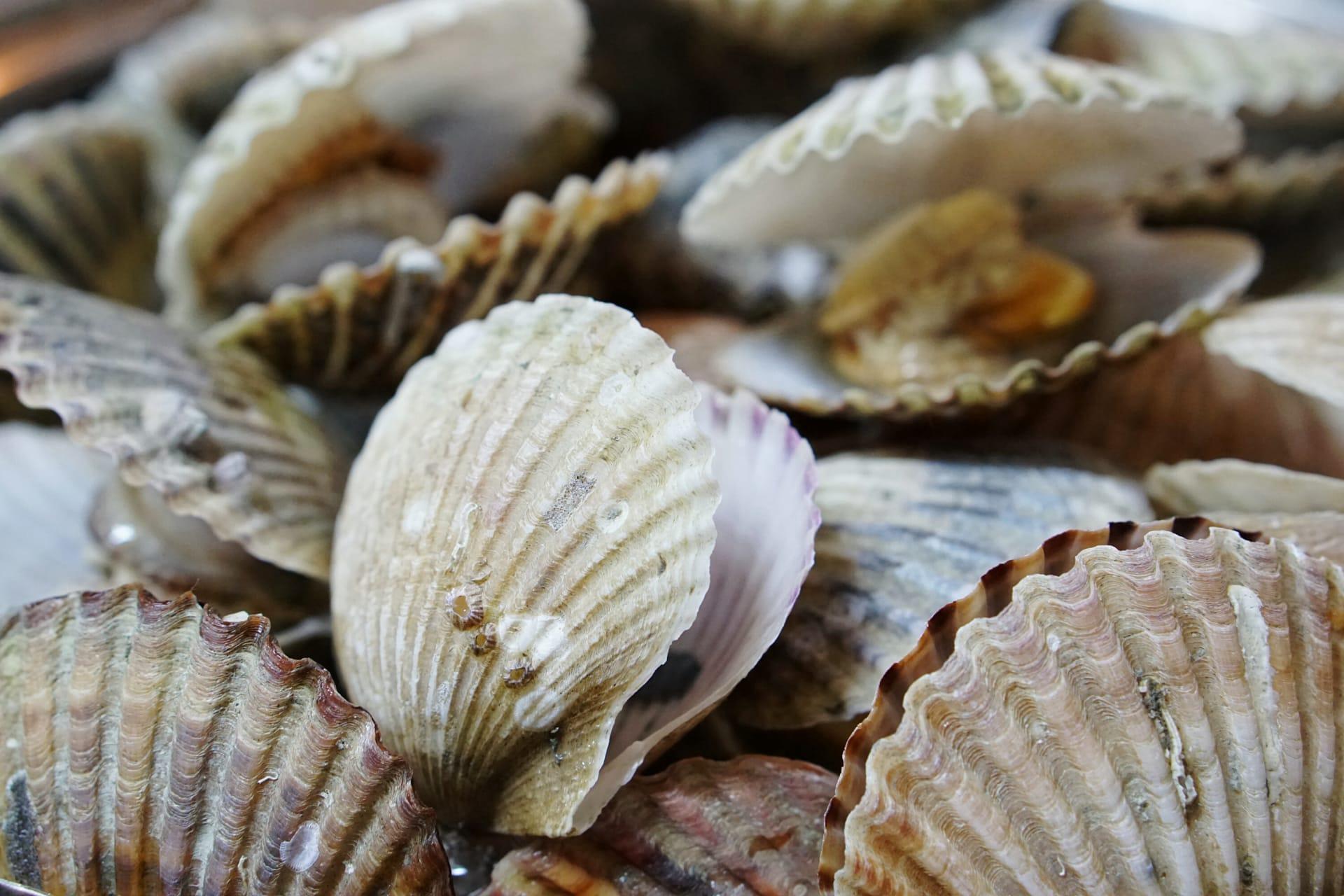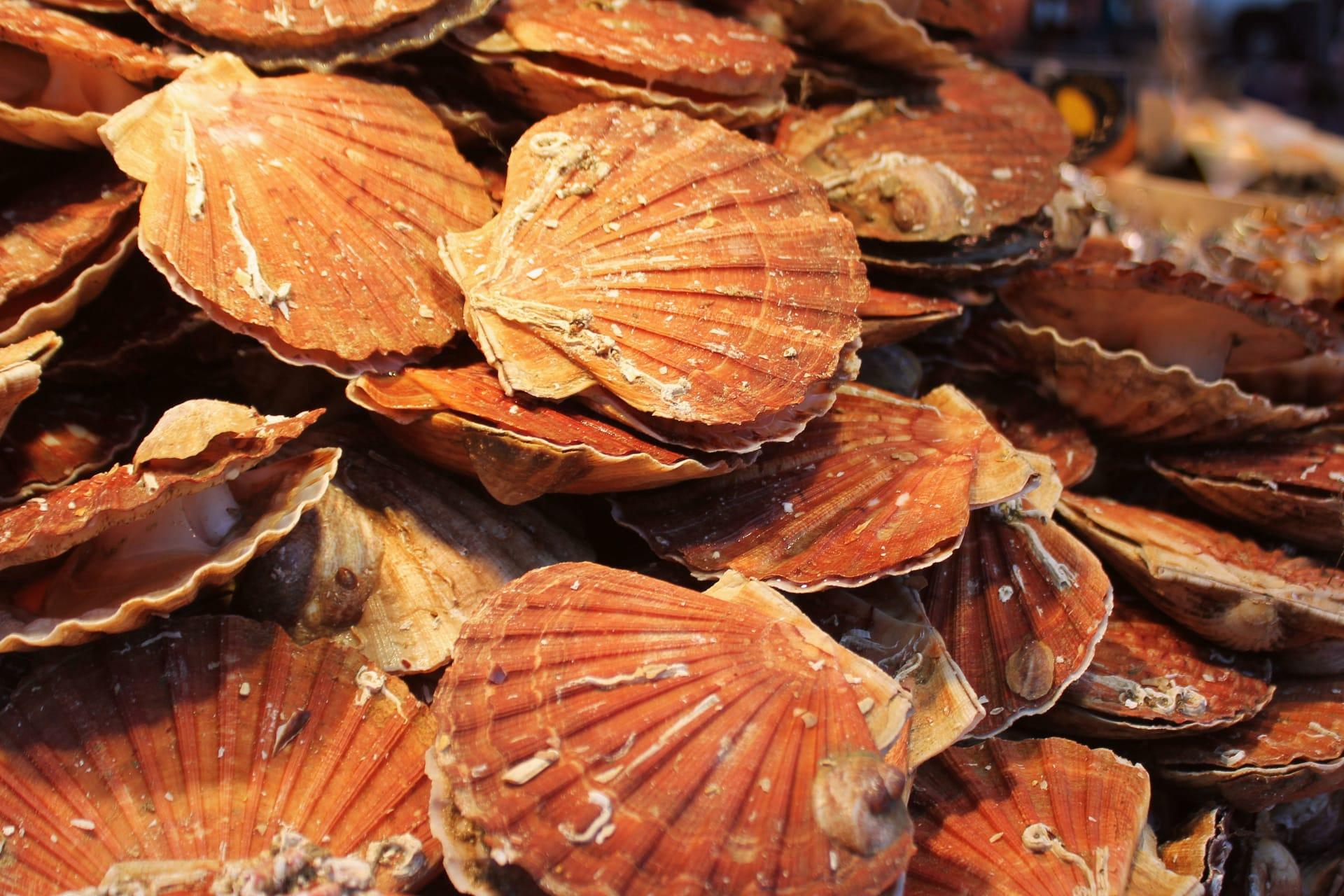Scallop
- Home /
- Mini Encyclopedia /
- Animal /
- Scallop
1
Scallops, known scientifically as members of the family Pectinidae, are a fascinating group of marine bivalve mollusks. They are distinguished by their nearly symmetrical, fan-shaped shells adorned with radiating ribs. The scallop family encompasses over 300 species, including the well-known Pecten maximus, commonly referred to as the king scallop, and the Placopecten magellanicus, known as the deep-sea scallop. Each species has adapted to its environment, showcasing a variety of sizes, colors, and shell patterns.
Scallops are widely distributed across the world's oceans, with a presence in both shallow coastal areas and deep sea environments. They thrive in a range of habitats from the low tide mark to depths exceeding 500 meters. The highest diversity of scallops is found in the Indo-Pacific region, but significant populations also inhabit the North Atlantic, the Mediterranean Sea, and off the coasts of North and South America. Their ability to live in various temperatures and salinities makes them a resilient and widespread group.

2
Question: Do scallops swim, or are they stationary like other bivalves?
Answer: Contrary to the common belief that all bivalves are stationary, scallops are unique in their ability to swim. They propel themselves through the water by rapidly opening and closing their shells, which allows them to escape predators and relocate to more favorable environments. This locomotion is facilitated by a powerful muscle known as the adductor, which acts like a hinge to snap the two shell halves together, creating a jet of water that propels the scallop forward.

3
Scallops have developed a range of survival strategies that contribute to their success in various marine environments. One notable adaptation is their advanced eyesight. Scallops possess a line of up to 100 tiny, blue eyes along the edge of their mantles, allowing them to detect light, shadows, and motion, thus alerting them to the presence of predators and enabling them to react swiftly.
In addition to their unique ability to swim, scallops employ a sophisticated water filtration system for feeding and breathing. They draw in water through one valve, filtering out plankton and other food particles with their gills, before expelling the filtered water through another valve. This not only sustains the scallop but also contributes to water clarity and health in their surrounding habitat.

4
In marine ecosystems, scallops play a pivotal role in the benthic community, contributing to the structure and function of their habitat. They serve as a key food source for a variety of predators, including starfish, crabs, and humans. The presence of scallops can indicate the health of the marine environment, as they are sensitive to changes in water quality and habitat conditions.
Scallops also contribute significantly to the economy, particularly in regions where scallop fishing and aquaculture are major industries. Sustainable scallop fisheries and farming practices help maintain population levels and ecological balance, ensuring that scallops continue to fulfill their ecological roles while supporting human livelihoods.

5
Film: "The Secret Life of Scallops" is a documentary produced in the United States in 2018. It delves into the mysterious world of scallops, showcasing their unique behaviors, swimming capabilities, and the critical role they play in marine ecosystems. The film also highlights the challenges scallops face due to environmental changes and overfishing.
Book: "Scallops: Biology, Ecology and Aquaculture" is a comprehensive text authored by Sandra E. Shumway and published in the United States in 2016. This book offers an in-depth look at scallop biology, their ecological interactions, and the principles of scallop aquaculture, making it a valuable resource for researchers, students, and industry professionals.
Book: "The Scallop Estuary: The Natural History of a Marine Habitat" by William J. Wolff, published in the United Kingdom in 2014, explores the dynamic and productive ecosystems of scallop habitats. Wolff's work provides insights into the life cycles, feeding behavior, and conservation challenges of scallops, emphasizing the importance of these habitats for biodiversity and marine health.